- SIAM
- Society of Indian Automobile Manufacturers
- Hero MotoCorp
- Maruti Suzuki India
- Honda Motorcycle & Scooter India
SIAM’s 19th Styling & Design Conclave Sees Discussion On Innovation, AI & Sustainability
- By Mohnish Bose
- March 29, 2025

Innovation and sustainability in design took centerstage at the 19th Styling & Design Conclave 2025 organised by the Society of Indian Automobile Manufacturers (SIAM). The event saw participation from designers and professionals from organisation such as Hero MotoCorp, Maruti Suzuki India, Honda Motorcycle & Scooter India, Stratasys and Autodesk among others.
G Sathiyaseelan, Chairman, SIAM Styling and Design Group and Vice-President, Ashok Leyland, shared his views on empathetic, inspirational and innovative approach towards technology and design,
Anuj Prasad, CEO and Founder, Desmania, expressed confidence in the bright future for automotive designers.
The event saw speakers acknowledging that automotive styling has become an old word, while design and sustainability are the modern buzzwords that indicate the direction in which the automotive sector must head.
“The level of design happening in India holds tremendous potential. We are at the threshold of a new era in design and innovation. Today, international organisations are looking to India for designs that cater to both local and global markets. Automotive design will help build the nation in a responsible manner,” said Prasad.
Prashant Banerjee, Executive Director, SIAM stated that “Indian automotive designs today are as good as Italian designs.”
Samarth Gupta, Senior Technical Specialist & Mobility Lead APAC, Autodesk, said, “Everyone wants to own a vehicle because it is an expression of independence. The urban population landscape is changing due to climate change. New developments in geopolitics and the evolution of consumers’ trends and preferences are impacting the mobility landscape. We will need to evolve our auto design thinking amidst disruptions.”
Teofilo Plaza Garcia, Industrial Studio Head, Hero MotoCorp, said “Motorsports-based designs can be used for road-based vehicles, as indicated through Hero XPulse 210. These vehicles will no longer be as expensive as before.”
Rahul Pandita, Regional Head, Stratasys, stated that 3D block printing is a useful technique that has helped companies like McLaren bring racing designs to life quickly. “As design processes such as 3D block printing decrease the time taken, companies can quickly decipher whether a design is feasible or not,” said Pandita.
Dinesh Raman, Director, Transportation Design, KISKA Shanghai, opined that “As the years go by, greater use of AI will be made for design, thereby freeing up time for creative pursuits by automotive designers.”
VS Deka, Group Manager, Royal Enfield, said, “AI innovation is coming into our lives and we need to adopt the evolving technology. AI can be customised through training and then be scaled up as per requirements.”
Ferdinand Klauser, Global Partner & MD, Asia, KISKA Shanghai said, “India has a lot of potential in bringing about the transformation in mobility designing landscape.”
He also mentioned that though the future is unpredictable, it is possible to plan for it by understanding that consumer needs are transforming faster than the market.
Professor Kaustuv Sengupta of NIFT Chennai, stated, “Colour represents around 20 percent of the design language. Every 300 miles in our country, you see a new colour context. Human beings see a small spectrum of colours. Colours affect us psychologically. We see what we want to see.”
Rajesh Gogu, Vice-President (Design), Maruti Suzuki India, revealed that the company decided to create a completely new design for the fourth generation of the Dzire. The design became a success despite a 55 percent market share for SUVs.
“The trends on the road are changing, as demand for sedans have reduced while that of SUVs have grown. Designing can reinvent declining segments or products to make them popular again. Innovation is not just about technology, it is also about shape, form, aerodynamics, performance and more. We can design our vehicles that can reduce the carbon footprint offering better fuel efficiency and value to customers,” averred Gogu.
While describing the role of AI in automotive designing, Harikrishnan AK, Delivery Manager, TCS Design, said, “AI image generators can be used for inspiration, exploration and for happy accidents but there are challenges of confidentiality and originality. We need to harness the full potential of AI by customisation and fine-tuning.”
Speaking about designing in the commercial vehicle segment, Pravin Gaikwad, Head of CV Design, Tata Motors, said, “We have adopted multi-powertrain strategy. It is possible for the form to get you the trust of the customer. Form is actually helping us to define many ideas. We are leveraging tech intelligence like telematics to design something very unique.”
He shared an insight on how Tata Motors was using space intelligence as a new design direction for making Tata Prima trucks and a new space-saving concept called Tata YU.
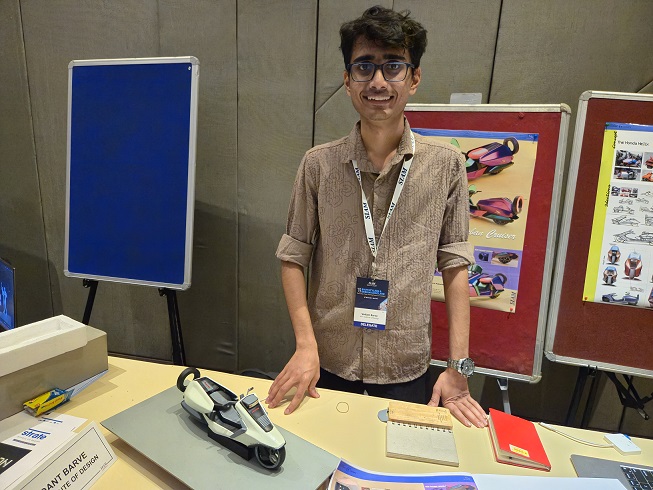
The SIAM Styling and Design Conclave also presented automotive design students of MIT (Maharashtra Institute of Technology), ADYPU (Ajeenkya DY Patil University) and NID (National Institute of Design) an opportunity to present their design prototypes. Vedant Barve, a student at MIT, won the first prize for an electric cruiser scooter concept.
“When we began, India had only two design schools. Today, there are over 1,500 design schools producing a strong talent pool for automotive design. We need to be transformative and move toward defining automotive design that is human-centric and sustainable,” added Prasad of Desmania.
“To make India into a global design hub, change that helps India use aspects of its culture while competing at a global level is needed in the academic curriculum,” concluded Sumer Singh, Associate Professor, IIT Delhi.
BorgWarner Expands Electrification Partnership With Great Wall Motor
- By TT News
- November 11, 2025
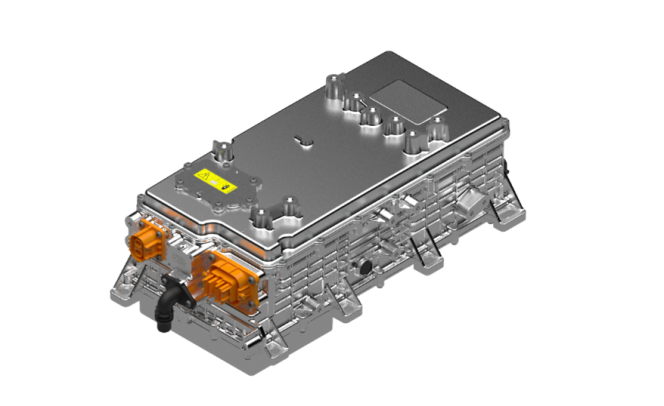
BorgWarner is significantly expanding its partnership with Great Wall Motor by securing two new electrified propulsion projects, building upon two previously announced dual inverter programmes. These new initiatives are scheduled to enter mass production in 2026. A cornerstone of this collaboration is BorgWarner's advanced dual inverter technology, which utilises a highly integrated design. This single unit can simultaneously control and drive two motors, offering superior packaging flexibility and easier installation for vehicle manufacturers.
The technology's sophistication is underscored by its use of a power module with double-sided cooling and the latest Viper power switches. This configuration can reduce thermal resistance by as much as 50 percent compared to conventional single-sided cooling, leading to a substantial increase in power density. Furthermore, the design allows different semiconductor dies to be packaged within identically sized modules, ensuring compliance with China's stringent CLTC efficiency standards. The system also incorporates adaptive battery voltage regulation, which broadens the motor's high-efficiency operating range to improve overall performance.
Emphasising flexibility, BorgWarner employs a platform-based design that adapts to various hybrid vehicle architectures. For the newly awarded projects, the HEV version of the dual inverter integrates a DC/DC converter and offers an optional voltage boost module. In contrast, the PHEV variant is designed without these components. This modular strategy provides manufacturers with critical adaptability, enabling faster product development cycles while simultaneously reducing both design and production costs.
Dr Stefan Demmerle, Vice President of BorgWarner Inc. and President and General Manager, PowerDrive Systems, said, “BorgWarner’s technical expertise in electrification and dual inverter products has earned Great Wall Motor’s continued confidence. The extension of this collaboration not only reflects recognition of our products and technologies but also underscores our strong commitment to supporting our customers’ new energy strategies. We will remain dedicated to accelerating their electrified vehicle portfolio.”
- Anaphite
- dry coating
- wet coating
- electrode production
- carbon emissions
- electric vehicle battery
- Joe Stevenson
- Lydia Bridges
- Minviro
- Automotive Transformation Fund
- ATF
Anaphite’s Dry Coating Process Claims To Cut Battery Carbon Emissions
- By MT Bureau
- November 06, 2025
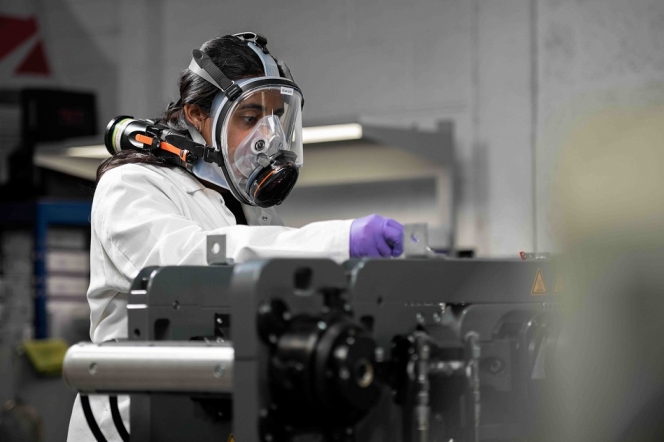
Anaphite, a UK battery technology startup, has released the results of an independent sustainability assessment of its dry coating technology platform for battery electrode manufacturing. The analysis, conducted by life cycle assessment experts Minviro, found that Anaphite's patented technology reduces carbon emissions by 3.57 kg CO2 eq. per kWh of cell capacity compared to the wet coating process.
At present, it is estimated that wet coating is used for over 99 percent of electrode production globally. It is energy-intensive due to the ovens needed to dry electrodes. Dry coating processes eliminate this drying oven.
Anaphite’s patented platform combines all ingredients of a battery electrode into a single engineered material, which is optimised for high-speed dry coating lines. The company states this approach solves the challenges of achieving dry coating at scale, unlocking carbon emissions savings for battery and EV makers.
- If Anaphite’s technology were to completely replace wet coating for every cell made in 2025, it would save 7 million tonnes of CO2.
- For a 75 kWh battery pack, the technology can deliver a 268 kg CO2 eq. saving.
With global annual demand expected to double by 2030, the adoption of dry coating is imperative to maximise environmental benefits.
Joe Stevenson, CEO, Anaphite, said, “Wet coating of electrodes is well proven, but manufacturers want it replaced by dry coating because of the carbon footprint improvements and cost reductions it delivers. Our unique dry coating process technology is the solution manufacturers need to make EVs more sustainable. We’re delighted to see its environmental benefits confirmed by Minviro’s independent assessment. We’re scaling-up the Anaphite technology platform at our facility in the UK and deepening our in-house dry coating capabilities and expertise. We are working in close collaboration with the global automotive industry to bring dry coating to market.”
Lydia Bridges, Senior Consultant, Minviro, said, “Collaborating with Anaphite on this study has been a great example of how rigorous, transparent assessment can translate innovative process design into quantifiable results. Our independent analysis identified a clear reduction in carbon footprint for Anaphite’s dry coating process compared with conventional wet coating, using ISO-aligned methods and critical review. Studies like this that follow the Environmental Footprint (EF) method provide essential environmental data for cell manufacturers, as this method forms the basis of the EU Battery Regulation carbon footprint quantification.”
The assessment is compliant with the ISO-14067 standard and the climate change model aligns with that proposed for the incoming EU Battery Passport regulations. These regulations will be mandatory from 2027 for EV and industrial batteries over 2 kWh, requiring the reporting of each battery's total carbon footprint. The work was part of a Feasibility Study project funded by a grant from the UK Government under the Automotive Transformation Fund (ATF).
- BOTTEGAFUORISERIE
- Alfa Romeo
- Maserati
- Santo Ficili
- Cristiano Fiorio
- Altagamma FOundation
- FUORISERIE
- BOTTEGA
- Corse
- La Storia
- Jean-Philippe Imparato
Alfa Romeo And Maserati Launch Bespoke Automotive Hub
- By MT Bureau
- November 06, 2025
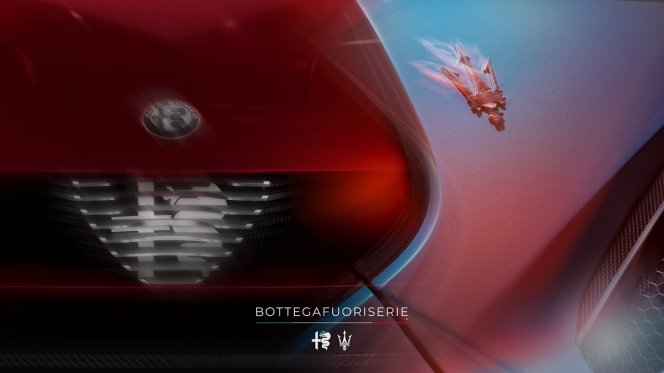
Italian automotive majors Alfa Romeo and Maserati have joined forces to establish BOTTEGAFUORISERIE, a new automotive excellence hub in Italy's Motor Valley. This initiative aims to shape bespoke automotive experiences by merging tradition, craftsmanship and technology.
The project encompasses a broad area extending from Modena to Turin and Arese (Milan province), bringing together the legacies of both manufacturers. Cristiano Fiorio has been entrusted with the leadership of BOTTEGAFUORISERIE, reporting directly to Santo Ficili, Alfa Romeo CEO and Maserati COO. The initiative was established under the patronage of the Altagamma Foundation.
BOTTEGAFUORISERIE will focus on several main thematic areas: BOTTEGA, FUORISERIE, Corse and La Storia (History).
- BOTTEGA: This serves as the 'sartorial heart,' dedicated to developing and building 'few-off' limited edition projects, such as the Alfa Romeo 33 Stradale and the Maserati MCXtrema. This work involves collaboration with the customer to create a unique piece.
- FUORISERIE: This offers advanced personalisation, allowing customers to turn their car into a unique model. A design team will explore new creative vernaculars while remaining faithful to the brands’ aesthetic codes.
- Corse: Focused on motorsport, this theme transforms racing know-how into engineering innovation for super sports cars. Maserati Corse serves as a driving force, leveraging racing solutions to evolve the cars.
- La Storia: This initiative preserves the historical heritage of both brands through restoration and certification of vintage cars, and the creation of archives and museums, including the Alfa Romeo Museum in Arese and the Umberto Panini Maserati Collection in Modena.
Santo Ficili, CEO, Alfa Romeo and COO, Maserati, said, “This launch is more than the creation of a new initiative – it is the symbol of a new era for Alfa Romeo and Maserati. It represents our unwavering belief in the power of Italian creativity, engineering and craftsmanship. I am proud to entrust this mission to Cristiano Fiorio; his exceptional work on projects like the Alfa Romeo 33 Stradale and our motorsport programmes has demonstrated not only technical mastery but also a deep emotional connection to the soul of our brands. This is the first milestone in a broader transformation that will define the future of both Alfa Romeo and Maserati.”
Jean-Philippe Imparato, Maserati CEO, added: “We are extremely proud to announce this extraordinary joining of forces between two iconic brands. BOTTEGAFUORISERIE represents the meeting point between vision and reality. This is where dreams will be shaped into reality, where the extraordinary becomes tangible. Guided by creativity and discipline, each project is the result of rigorous research and unwavering dedication. By combining the finest in Italian design, engineering, and culture, BOTTEGAFUORISERIE embodies a unique approach to shaping the future – one we deeply believe in.”
Cristiano Fiorio, BOTTEGAFUORISERIE General Manager, said, “Being entrusted with the leadership of BOTTEGAFUORISERIE is both a profound honour and a thrilling challenge. This is somewhere where past, present and future converge – where we celebrate our heritage while daring to imagine what’s next. I will draw on the incredible experiences gained through special projects and motorsport to guide this new journey. With a team of passionate, talented individuals, we will craft vehicles that are not only technically exceptional but emotionally unforgettable. Our mission is clear: to honour the legacy of Alfa Romeo and Maserati, and to write the next chapter in their history with boldness, beauty and authenticity. Performance is an act of culture. Creating beauty is a form of art.”
Eberspaecher Expands Portfolio With 800-Volt EV Heating Solutions
- By MT Bureau
- November 06, 2025
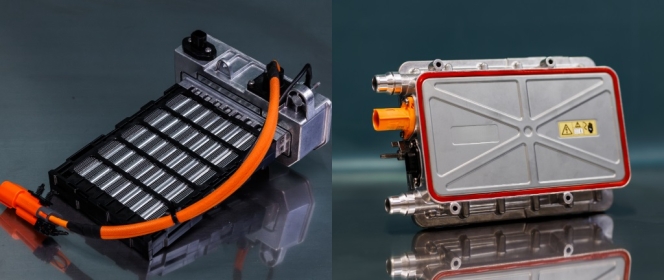
German component supplier Eberspaecher is expanding its product portfolio with two new heating solutions for 800-volt electrical systems in battery electric vehicles (BEVs).
The company states that optimised thermal management is important for addressing challenges in electromobility, such as battery range, charging times and comfort.
Eberspaecher is introducing a coolant heater with thick film technology and an air heater with PTC technology. Both systems provide demand-based heat output for the passenger cabin and battery conditioning and can be integrated into OEM systems on a modular basis.
The new coolant heater uses thick film technology (TFE), offering a compact and powerful alternative to classic PTC technology.
- Heat Output: The component conditions the vehicle battery and achieves up to 12 kW of output at 800-volt, contributing to extending battery life and reducing charging times.
- Voltage Flexibility: The heater delivers sufficient output even at 400-volt, ensuring compatibility with the current charging infrastructure.
- Safety: The safety concept includes multiple sensors and an independently operating second shutdown path.
The thick film heater is suitable for passenger cars and trucks and has been selected by several automobile manufacturers for use in their series lines. Production is scheduled to begin in 2027.
On the other hand, the air heater, which is installed directly in the air-conditioning system, uses PTC technology.
- Multi-Zone Function: The heater features a multi-zone function allowing the driver to control the temperature separately in up to four zones in the interior, such as different temperatures for the driver and front passenger sides.
- Power Range: The heater is designed to accommodate both 400- and 800-volt architectures, with a power range of 3-8 kW.
- Emissions: Eberspaecher avoids using adhesives in the setup of heating elements wherever possible, minimising the risk of unwanted emissions in the passenger compartment.
The product will be available in Asia, Europe and North America starting in 2028.






Comments (0)
ADD COMMENT